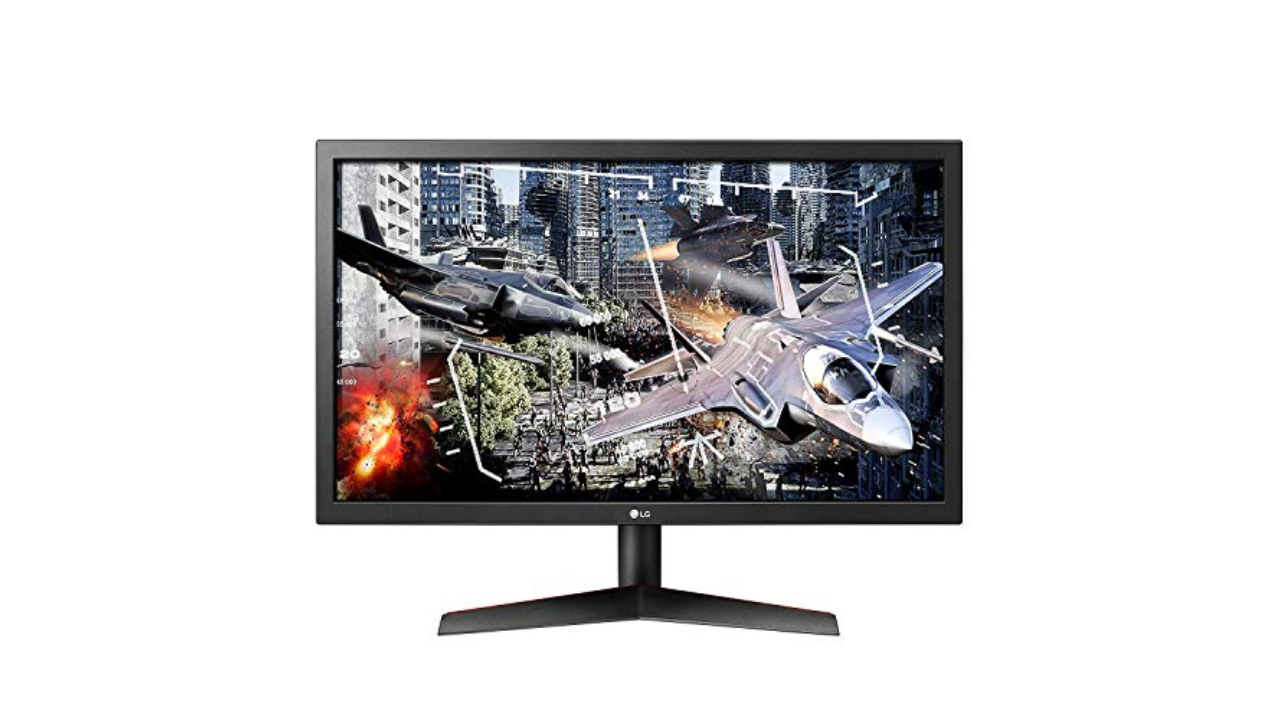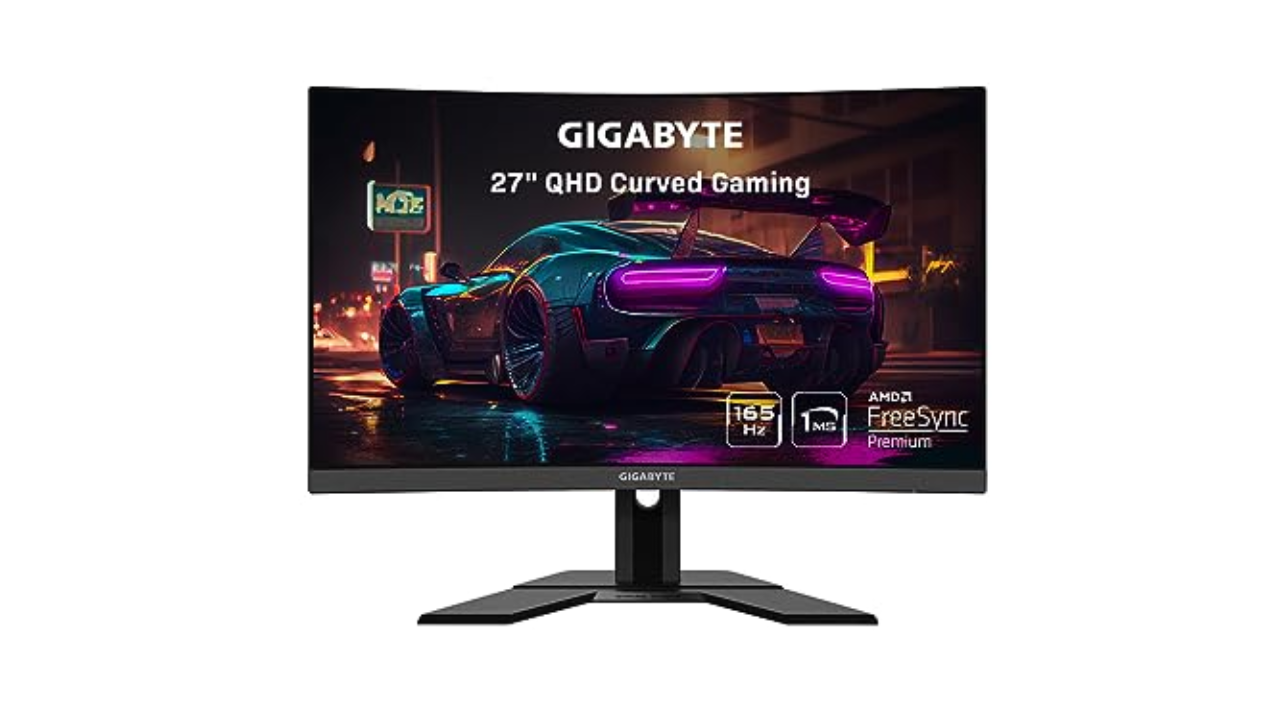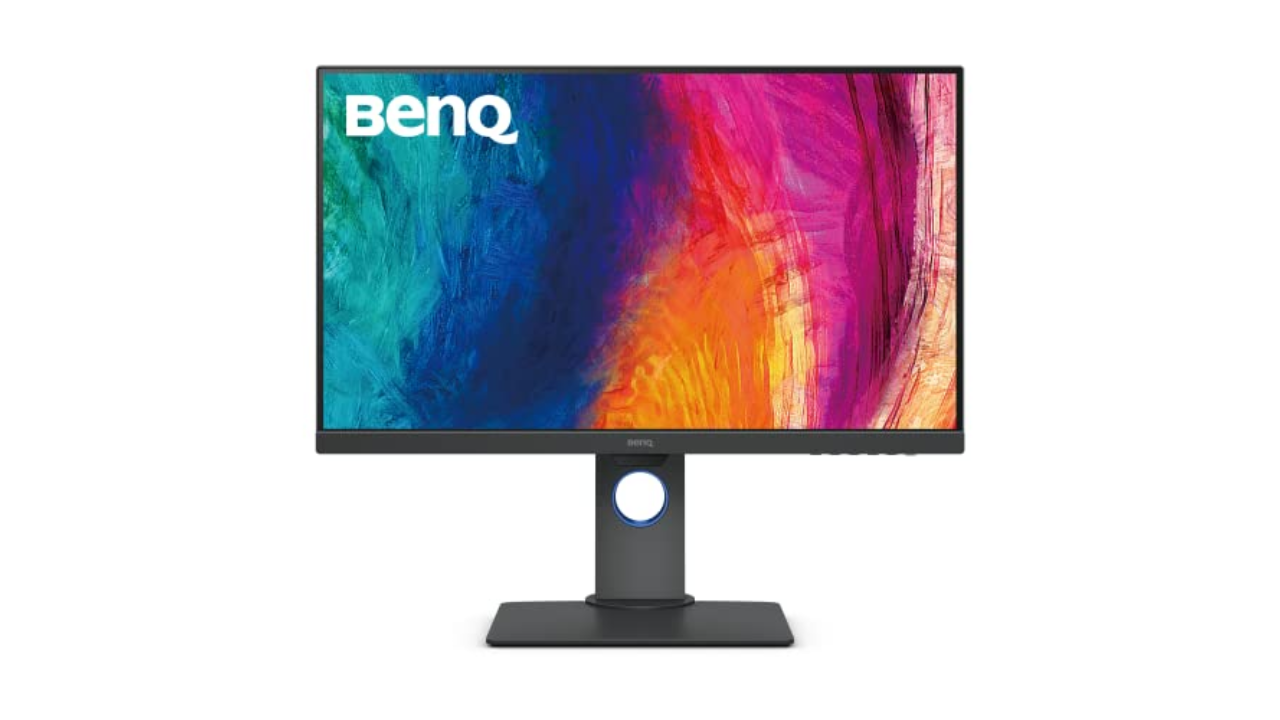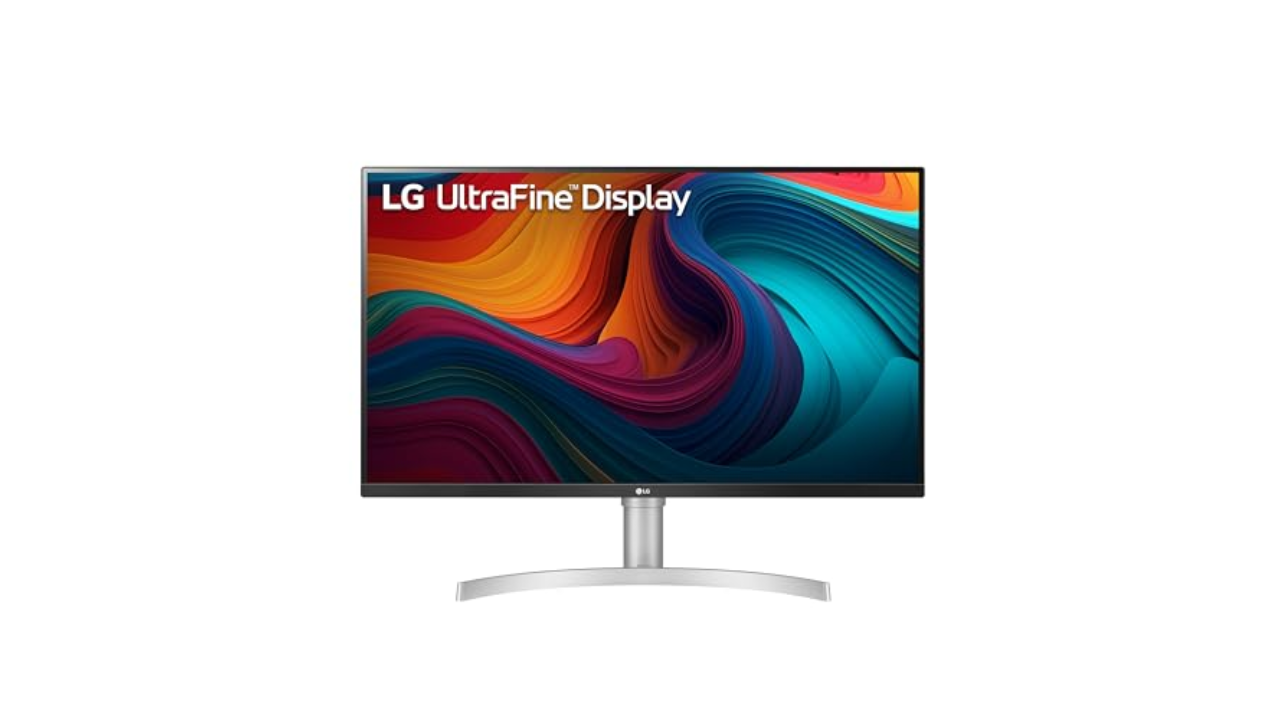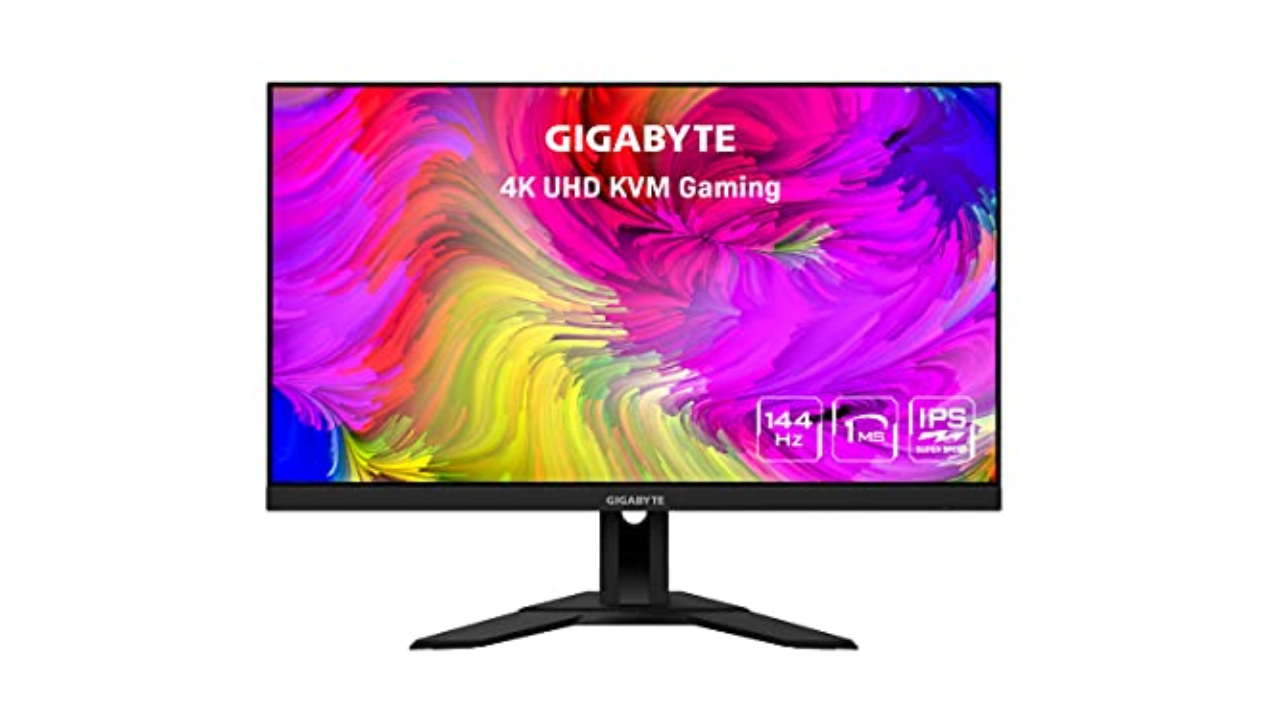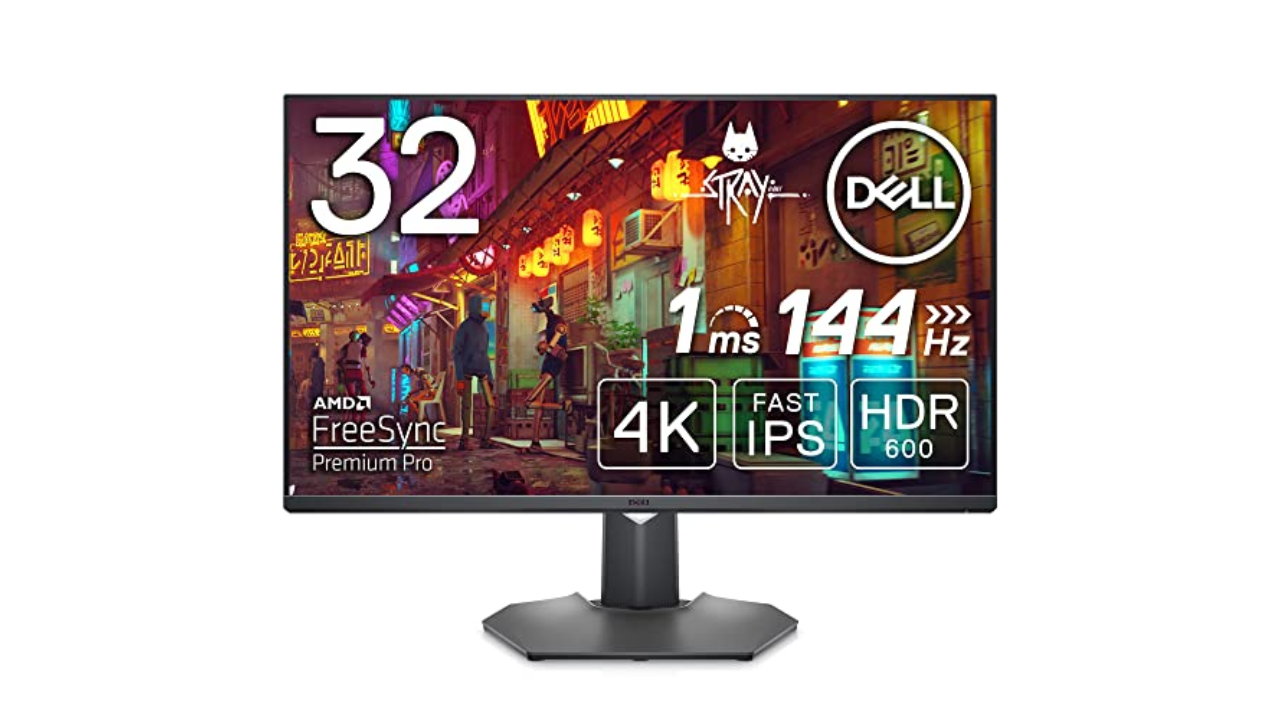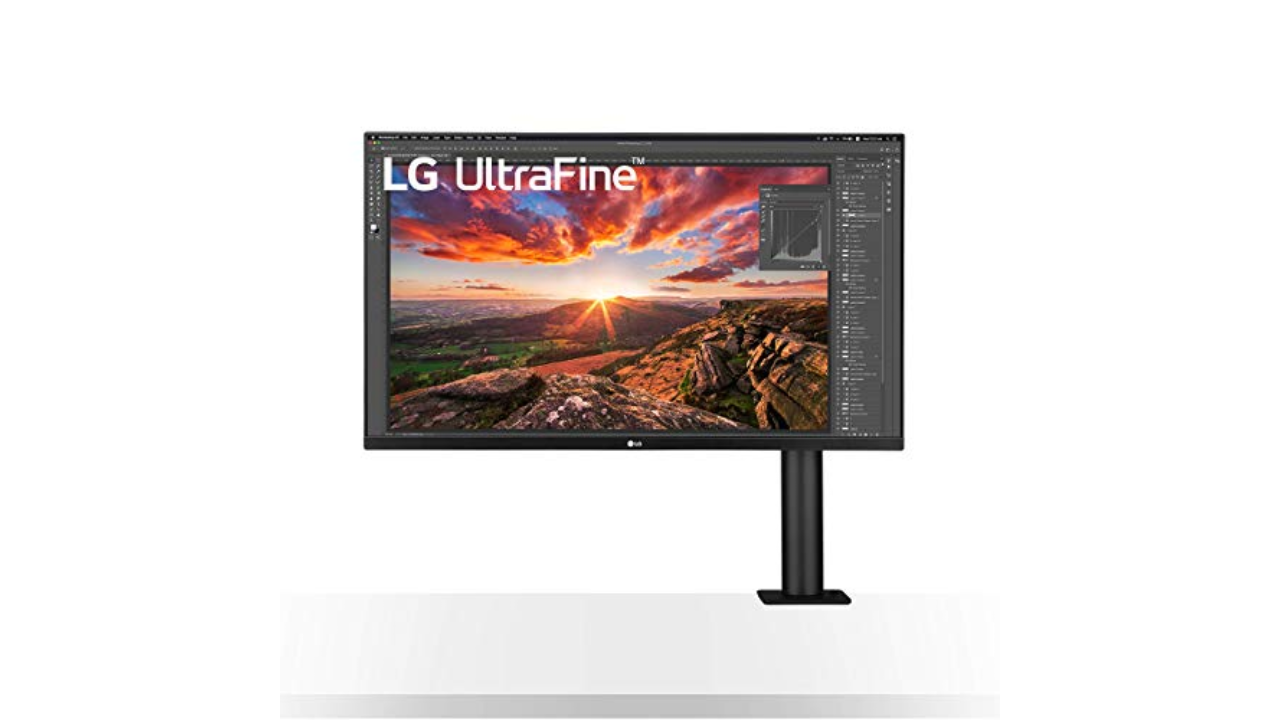Engadget has been testing and reviewing consumer tech since 2004. Our stories may include affiliate links; if you buy something through a link, we may earn a commission. Read more about how we evaluate products.
The best monitors for every budget in 2024
HDR, refresh rate, curved screens? We help you figure it all out and find the best computer monitor for you.
There are tons of solid computer monitors available right now, which is great for anyone who needs a second screen for their home office setup or a special gaming monitor for their rig. Not to mention, display technology has evolved a lot in the past few years: OLED Flex, QD-OLED and built-in smart platforms have become more prevalent, and things like color accuracy, image quality, size and resolution have seen big improvements, too. Engadget can help you make sense of the computer monitor space and help you decide which monitors (or, at the very least, type of monitor) is right for you with our best monitors buying guide. Whether you’re a business user, a content creator, a multitasker or into competitive gaming, you have plenty of options to choose from and we’ve outline our top picks for the best monitors below.
Samsung T35F
Under $200 option
LG UltraGear FHD 24-Inch Gaming Monitor
Under $200 option
HP U28 4K HDR Monitor
Under $400 option
Gigabyte G27QC A 2-inch 165Hz 1440P Curved Gaming Monitor
Under $400 option
BenQ PD2705Q 27-inch Monitor
Under $400 option
LG 32UN650-W 32-inch UHD Monitor
Under $500 option
ASUS ROG Swift PG256QN
Under $500 option
Gigabyte M28U 28-inch 144Hz Gaming Monitor
Under $500 option
ViewSonic ColorPro VP2786-4K
Under $1,000 option
Dell G3223Q 32 Inch Gaming Monitor
Under $1,000 option
Dell P3223QE Monitor
Under $1,000 option
Apple Studio Display - Nano-Texture Glass - Tilt-Adjustable Stand
Best monitor for Mac users
LG 32" UltraFine Display Ergo UHD 4K IPS Display
Another Mac option
LG 34GP950G-B 34 Inch Ultragear Gaming Monitor
Best Ultrawide monitor
LePow C2S
Best portable monitor
ASUS ProArt PA32UCG-K
Best luxury monitor
Table of Contents
Best monitors under $200
Screen size: 27 inches | Resolution: 1080p | Display type: IPS | Max refresh rate: 75Hz | Weight: 6.6 pounds | Connector type: HDMI | Panel type: FHD| Brightness (cd/m2): 250cd/m2
The best budget monitor with a balance of size, refresh rate and color accuracy is Samsung’s 27-inch 1080p T35F. It’s good for business or light PC gaming and content work, thanks to the IPS panel and 75Hz refresh rate. Plus, it’s fairly attractive and modern looking. There are some things you don’t get at that price, of course – a downside is that it can only tilt and has an HDMI 1.4 connection.
Screen size: 24 inches | Resolution: 1080p | Display type: TN | Max refresh rate: 144Hz | Weight: 8.2 pounds | Connector type: HDMI | Panel type: FHD | Brightness (cd/m2): 300cd/m2
If you’re fine with a smaller display or have limited desk space, another solid option is LG’s 24-inch 24GL600F. It offers a high refresh rate of 144Hz with AMD FreeSync support, a 1ms response time and low input lag. You also get HDMI and DisplayPort inputs, but like the T35F, there’s no height adjustment.
Best monitors under $400
Screen size: 28-inches | Resolution: 4K | Display type: IPS | Max refresh rate: 60Hz | Weight: 14 pounds | Connector type: HDMI, DisplayPort | Panel type: UHD | Brightness (cd/m2): 400cd/m2
The 28-inch HP U28 4K HDR monitor is a great all around choice, especially for content creators. The 60Hz IPS panel and factory calibration delivers excellent color accuracy and it’s a nice size for creative or business work. It comes with DisplayPort, HDMI and three USB 3.0 ports, along with a USB-C port with 65W of charging for a laptop or tablet. And it’s easy to set just right, thanks to height, swivel and pivot adjustment.
Screen size: 27 inches | Resolution: 1440p | Display type: VA | Max refresh rate: 165Hz | Weight: 14 pounds | Connector type: HDMI, DisplayPort | Panel type: QHD | Brightness (cd/m2): 250cd/m2
If gaming is more your thing, the Gigabyte G27QC is a top pick. The 27-inch, 1440p curved monitor has an ideal size and resolution for gaming, and it has a quick 165Hz refresh rate and 1ms response time. You can connect via HDMI 2.0 or DisplayPort 1.2 connections and get HDR support – albeit, without DisplayHDR certification.
Screen size: 27 inches | Resolution: 1440p | Display type: IPS | Max refresh rate: 60Hz | Weight: 18.7 pounds | Connector type: HDMI, DisplayPort | Panel type: LED | Brightness (cd/m2): 250cd/m2
The $400 BenQ 27-inch 2K QHD HDR model is ideal for creative work, particularly photo editing and graphic design. While resolution is limited to 1440p, it covers 100 percent of the sRGB color gamut with a “Delta E” accuracy value of less than 3 for consistent color performance. You also get height, pivot and swivel adjustment (a full 90 degrees), with HDMI 2.0, DisplayPort 1.4 and USB-C daisy chaining and 65W power delivery. You could also easily make use of the USB-C connection here and invest in a USB hub to expand the range of ports.
Best monitors under $500
Screen size: 32 inches | Resolution: 4K | Display type: IPS | Max refresh rate: 60Hz | Weight: 18.1 pounds | Connector type: HDMI, DisplayPort | Panel type: UHD | Brightness (cd/m2): 350cd/m2
The 32-inch LG 32UN650-W is a great 4K monitor for entertainment, creative chores and gaming. The 31.5-inch, 60Hz IPS panel covers an excellent 95 percent of the DCI-P3 gamut with 10-bit color, but also supports AMD FreeSync for gaming performance. It also supports HDR, albeit with just 350 nits of maximum brightness. It has HDMI 2.0 and DisplayPort 1.4 ports, tilt and height adjustments and even built-in speakers.
Screen size: 24.5 inches | Resolution: 1080p | Display type: IPS | Max refresh rate: 360Hz | Weight: 15.6 pounds | Connector type: HDMI, DisplayPort | Panel type: FHD | Brightness (cd/m2): 400cd/m2
Sometimes speed rules over size and resolution, and the 24.5-inch 1080p ASUS ROG Swift PG256QN is fast. It maxes out at a 360Hz refresh rate (with NVIDIA G-Sync support) and 1ms GtG response time. At the same time, you get 1.07 billion colors with HDR support (up to 400 nits brightness) so you can see your enemies quickly and clearly. Other niceties of this best monitor pick include a fully adjustable stand, ASUS’s GamePlus Hotkey Enhancements and a large heatsink.
Screen size: 28 inches | Resolution: 2160p | Display type: IPS | Max refresh rate: 144Hz | Weight: 14.3 pounds | Connector type: HDMI, DisplayPort | Panel type: UHD | Brightness (cd/m2): 300cd/m2
Gigabyte’s M28U 28-inch 144Hz 4K gaming monitor sure does a lot. It has an IPS panel with a 2ms (MPRT) response time, 94 percent DCI-P3 coverage, DisplayHDR 400 certification, 2 HDMI 2.1 ports and FreeSync Premium Pro support. It comes in a little bit more expensive than $500, but we've often seen it on sale for less. You’ll get fluid frame rates here, too; perfect for enjoying those AAA titles.
Best monitors under $1,000
Screen size: 27 inches | Resolution: 4K | Display type: IPS | Max refresh rate: 60Hz | Weight: 18.4 pounds | Connector type: HDMI, DisplayPort | Panel type: UHD | Brightness (cd/m2): 350cd/m2
In this price range you can have resolution, color accuracy or brightness, but not all three. The one with the best balance is ViewSonic’s $1,000 ColorPro VP2786 27-inch 4K HDR Monitor. The true 10-bit IPS panel covers 98 percent of the DCI-P3 color palette with an excellent Delta <2 accuracy figure, and is certified for soft-proofing by the demanding Fogra print industry. At the same time, it offers HDR10 support, albeit with a limited 350 nits of output. It even includes a “ColorPro” wheel control compatible with Adobe or Capture One apps.
Screen size: 32 inches | Resolution: 2160p | Display type: IPS | Max refresh rate: 100Hz | Weight: 19.4 pounds | Connector type: HDMI, DisplayPort | Panel type: UHD | Brightness (cd/m2): 400cd/m2
The best gaming monitor under $1,000 is Dell’s G3223Q 4K 32-inch HDR 144Hz monitor because of the speed, brightness and compatibility. It has an IPS panel with a 144Hz refresh rate, 1ms GtG response time, 95 percent DCI-P3 coverage and DisplayHDR 600 certification. Plus, it comes with a pair of HDMI 2.1 ports and is both FreeSync and G-Sync compatible.
Screen size: 31.5 inches | Resolution: 4K | Display type: LCD | Max refresh rate: 60Hz | Weight: 22.5 pounds | Connector type: HDMI, DisplayPort | Panel type: LED | Brightness (cd/m2): 350cd/m2
Dell’s P3223QE 4K USB-C Hub monitor is productivity-oriented, thanks to the wired Ethernet connectivity and USB-C ports that offer up to 90W of power delivery for laptops. It’s a 4K IPS panel with a 178-degree viewing angle and 350 nits of brightness and support for a billion colors (8-bit + FRC). It offers height, pivot, swivel and tilt adjustment, a VESA mounting interface and DisplayPort/HDMI inputs.
Screen size: 27 inches | Resolution: 5K | Display type: Retina | Max refresh rate: 60Hz | Weight: 13.8 pounds | Connector type: USB-C, Thunderbolt 3 | Panel type: WLED | Brightness (cd/m2): 600cd/m2
In general, monitor compatibility issues with MacBooks and Macs are a thing of the past, though you can still experience issues with things like refresh rates, particularly on M1 Macs. If you’d prefer to stay within the Apple family, the most cost-effective option is still the 27-inch Apple Studio Display. It supports 5K resolution (5,120 x 2,880) with up to 600 nits of brightness, so it can handle creative chores with ease. It even includes a 12-megapixel UltraWide camera that keeps you in frame via Center Stage, along with a three-mic array, so you won’t have to spend extra on a webcam.
Screen size: 32 inches | Resolution: 4K | Display type: IPS | Max refresh rate: 60Hz | Weight: 22.7 pounds | Connector type: HDMI, DisplayPort | Panel type: UHD | Brightness (cd/m2): 350cd/m2
The best third-party option is LG’s $700 UltraFine 4 display, also sold on Apple’s Store. With a 24-inch 4K panel, you not only get very high resolution but also 500 nits of brightness (albeit, without HDR capability). It’s color-accurate out of the box, making it great for video- and photo-editing work on a Mac or MacBook. Finally, it supports Thunderbolt 3 with daisy chaining and power delivery, all of which is very useful for Mac users who may want multiple displays.
Screen size: 34 inches | Resolution: 1440p | Display type: IPS | Max refresh rate: 144Hz | Weight: 20.1 pounds | Connector type: HDMI, DisplayPort | Panel type: QHD | Brightness (cd/m2): 400cd/m2
Ultrawide 21:9 monitors are a great option for some types of content creation, games (particularly driving and flight sims) and productivity work. The best model this year is LG’s 34GP950G-B, a 34-inch 3,440 x 1,440 curved monitor. The curved IPS panel supports HDR10 with 400 nits of brightness and maximum (via overclocking) 180Hz refresh rate. It’s also G-Sync and FreeSync compatible (the latter over DisplayPort only).
Screen size: 15.6-inch | Resolution: 1080p | Display type: IPS | Max refresh rate: 60Hz | Weight: 1.61 pounds | Connector type: Mini HDMI, Mini DP | Panel type: FHD | Brightness (cd/m2): 220cd/m2
For the best balance of functionality, performance and price, LePow’s 15.6-inch C2S is a solid option. It offers decent brightness (220 nits), solid contrast and a very respectable 96.1-percent sRGB gamut coverage. You get a generous selection of ports (one mini-DisplayPort, one mini-HDMI port and two USB-C ports, along with a headphone jack. The metal stand is solid and practical, and it even has built-in speakers of decent quality.
Screen size: 32 inches | Resolution: 4K | Display type: IPS | Max refresh rate: 120Hz | Weight: 32.3 pounds | Connector type: HDMI, DisplayPort | Panel type: Mini-LED | Brightness (cd/m2): 1000cd/m2
ASUS still holds the prize for best luxury monitor, but it discontinued the previous mini-LED $4,000 ProArt PA32UCX monitor and replaced it with the $5,000 PA32UCG-K display. It uses the same mini-LED tech, but ups the ante with 1,600 nits of brightness via 1,152 backlight zones, an HDMI 2.1 port, 4K 120Hz resolution, 10-bit, 98 percent DCI-P3 coverage and an impressive 85 percent Rec.2020 coverage. Oh, and it’s one of the few monitors out there that supports Dolby Vision, along with HDR10 and HLG.
You’re probably doing it wrong if you’re using a pricey $5K monitor for gaming. However, it does support AMD FreeSync (good for gaming creation) and has a 5-millisecond response time, very respectable for a display essentially designed for professional colorists. And to that end, color accuracy is calibrated to Delta E < 1 and it’s a true 10-bit panel delivering billions of colors. To verify that, it even comes with an X-rite i1 Display Pro color calibrator, normally sold separately for around $500.
On top of this model, ASUS now makes several slightly less bright and less expensive variants, namely the $4,180 PA32UCX-PK, (plus -P, and -K variants with slightly different features), offering 1,200 nits of brightness and a 60Hz (not 120Hz) refresh rate. Specs are nearly identical otherwise.
Factors to consider
Panel type
The cheapest monitors are still TN (twisted nematic), which are strictly for gamers or office use. VA (vertical alignment) monitors are also relatively cheap, while offering good brightness and a high contrast ratio. However, content creators will find that IPS (in-plane switching) LCD displays deliver better color accuracy, picture quality and viewing angles.
If maximum brightness is important, a quantum dot LCD display is the way to go — those are typically found in larger displays. OLED monitors are now available and offer the best blacks and color reproduction, but they lack the brightness of LED or quantum dot displays. Plus, they cost a lot. The latest type of OLED monitor, called QD-OLED from Samsung, just came out in 2022. The most notable advantage is that it can get a lot brighter, with monitors shown at CES 2022 hitting up to 1,000 nits of peak brightness.
MiniLEDs are now widely used in high-end displays. They’re similar to quantum dot tech, but as the name suggests, it uses smaller LED diodes that are just 0.2mm in diameter. As such, manufacturers can pack in up to three times more LEDs with more local dimming zones, delivering deeper blacks and better contrast.
Screen size, resolution and display format
In this day and age, screen size rules. Where 24-inch displays used to be more or less standard (and can still be useful for basic computing), 27-, 32-, 34- and even 42-inch displays have become popular for entertainment, content creation and even gaming these days.
Nearly every monitor used to be 16:9, but it’s now possible to find 16:10 and other more exotic display shapes. On the gaming and entertainment side, we’re also seeing curved and ultrawide monitors with aspect ratios like 21:9. If you do decide to buy an ultrawide display, however, keep in mind that a 30-inch 21:9 model is the same height as a 24-inch monitor, so you might end up with a smaller display than you expected. As a rule of thumb, add 25 percent to the size of a 21:9 monitor to get the vertical height you’d expect from a model with a 16:9 aspect ratio.
A 4K monitor is nearly a must for content creators, and some folks are even going for 5K or all the way up to 8K. Keep in mind, though, that you’ll need a pretty powerful computer with a decent graphics card to drive all those sharp pixels. And 4K resolution should be paired with a screen size of 27 inches and up, or you won’t notice much difference between 1440p. At the same time, I wouldn’t get a model larger than 27 inches unless it’s 4K, as you’ll start to see pixelation if you’re working up close to the display.
One new category to consider is portable monitors designed to be carried and used with laptops. Those typically come in 1080p resolutions and sizes from 13-15 inches. They usually have a lightweight kickstand-type support that folds up to keep things compact.
HDR
HDR is the buzzy monitor feature to have these days, as it adds vibrancy to entertainment and gaming – but be careful before jumping in. Some monitors that claim HDR on the marketing materials don’t even conform to a base standard. To be sure that a display at least meets minimum HDR specs, you’ll want to choose one with a DisplayHDR rating with each tier representing maximum brightness in nits.
However, the lowest DisplayHDR 400 and 500 tiers may disappoint you with a lack of brightness, washed out blacks and mediocre color reproduction. If you can afford it, the best monitor to choose is a model with DisplayHDR 600, 1000 or True Black 400, True Black 500 and True Black 600. The True Black settings are designed primarily for OLED models, with maximum black levels at .0005 nits.
Where televisions typically offer HDR10 and Dolby Vision or HDR10+, most PC monitors only support the HDR10 standard, other than a few (very expensive) models. That doesn’t matter much for content creation or gaming, but HDR streaming on Netflix, Amazon Prime Video and other services won’t look quite as punchy. In addition, the best gaming monitors are usually the ones supporting HDR600 (and up), rather than content creation monitors – with a few exceptions.
Refresh rate
Refresh rate is a key feature, particularly on gaming monitors. A bare minimum nowadays is 60Hz, and 80Hz and higher refresh rates are much easier on the eyes. However, most 4K displays top out at 60Hz with some rare exceptions and the HDMI 2.0 spec only supports 4K at 60Hz, so you’d need at least DisplayPort 1.4 (4K at 120Hz) or HDMI 2.1. The latter is now available on a number of monitors, particularly gaming displays. However, it’s only supported on the latest NVIDIA RTX 3000- and 4000-series, AMD RX 6000-series GPUs.
Inputs
There are essentially three types of modern display inputs: Thunderbolt, DisplayPort and HDMI. Most monitors built for PCs come with the latter two, while a select few (typically built for Macs) will use Thunderbolt. To add to the confusion, USB-C ports may be Thunderbolt 3 and by extension, DisplayPort compatible, so you may need a USB-C to Thunderbolt or DisplayPort cable adapter depending on your display.
Color bit depth
Serious content creators should consider a more costly 10-bit monitor that can display billions of colors. If budget is an issue, you can go for an 8-bit panel that can fake billions of colors via dithering (often spec’d as “8-bit + FRC”). For entertainment or business purposes, a regular 8-bit monitor that can display millions of colors will be fine.
Color gamut
The other aspect of color is the gamut. That expresses the range of colors that can be reproduced and not just the number of colors. Most good monitors these days can cover the sRGB and Rec.709 gamuts (designed for photos and video respectively). For more demanding work, though, you’ll want one that can reproduce more demanding modern gamuts like AdobeRGB, DCI-P3 and Rec.2020 gamuts, which encompass a wider range of colors. The latter two are often used for film projection and HDR, respectively.
Console gaming
Both the Xbox Series X and Sony’s PS5 can handle 4K 120Hz HDR gaming, so if you’re into resolution over pure speed, you’ll want a monitor that can keep up and provide the best gaming experience possible. 4K resolution, HDR and at least 120Hz is the minimum starting point, but fortunately there are 27-inch displays with those specs starting at well under $1,000, so you can still achieve high FPS gaming without breaking the bank.
Pricing and parts shortages
Though the pandemic has eased, monitor supply is still a bit tighter than pre-pandemic levels due to supply and demand issues. To that end, you may have trouble finding monitors at Amazon, B&H or elsewhere for the suggested retail price point. For our guide below, we’re basing our picks on the MSRP, as long as the street price doesn’t exceed that by more than $25.







